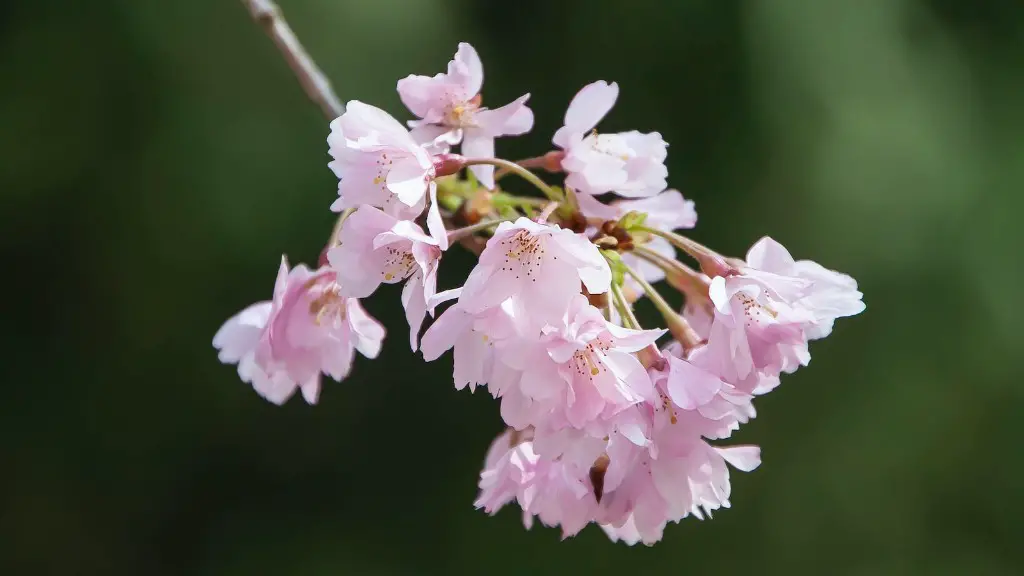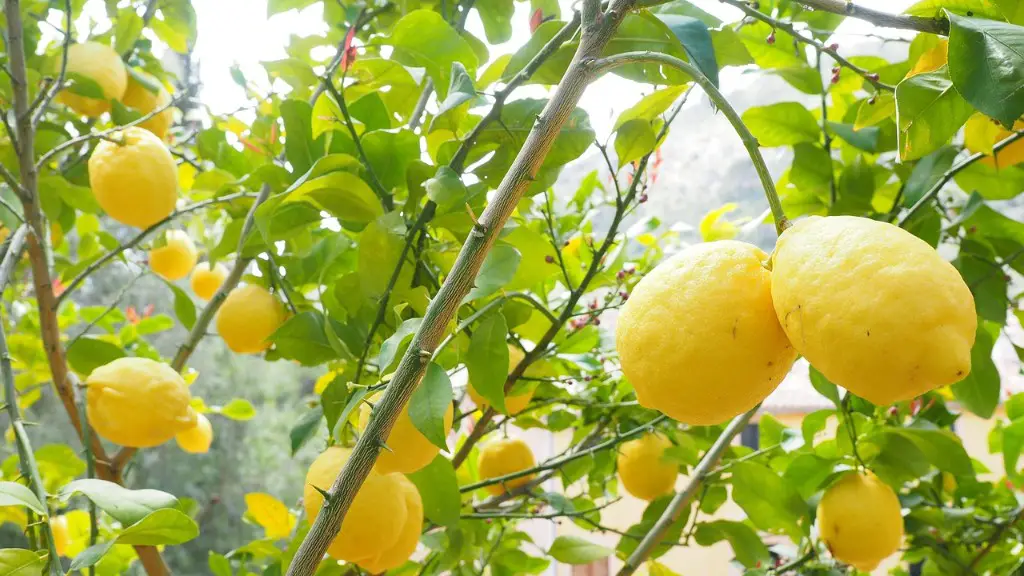(length 800 words)
Growing bonsai cherry trees is an art form with a long history. The Japanese have been growing bonsai since at least the 11th century, and it is one of the oldest examples of cultivated ornamental trees in the world. To create a beautiful bonsai cherry tree, one must first select the right species and variety. Japanese flowering cherries are a popular choice, as their flowers are quite spectacular.
The art of bonsai involves more than planting a tree in a pot – it requires skill and patience to create a shapely and balanced form. Pruning is one of the most important aspects of creating an aesthetically pleasing bonsai tree. It is important to avoid over-pruning and to leave enough of the tree’s branches so that it can still grow and thrive. It is also important to avoid misuse of pruners as it can compromise the health of the tree.
Soil is also important for bonsai growth. Specialized bonsai soil mix should be used, as it contains fertilizers and is designed to give bonsai trees the best possible growing conditions. The soil should be light and well-draining, and should contain adequate amounts of organic matter, such as compost.
The most important thing for bonsai trees is adequate watering. Most bonsai trees should be watered every day, but it is important to let the soil dry out between waterings to prevent root rot. When watering a bonsai tree, it should be done thoroughly and evenly until the soil is saturated, and the excess water should be allowed to drain out completely. Over-watering is one of the most common causes of death in bonsai trees.
When it comes to fertilizing bonsai trees, it is important to use a specialized fertilizer designed for bonsai. These fertilizers provide the necessary nutrients for bonsai trees to remain healthy and vibrant. It is important to fertilize bonsai trees regularly, as they are grown in a very small container which can quickly become depleted of essential nutrients.
When it comes to repotting bonsai cherry trees, it should be done every two to three years. The repotting process involves gently removing the tree from the pot, pruning away any excess soil, and repotting the tree in fresh soil. Repotting helps to provide the tree with fresh nutrients and ensures that the roots are healthy. It is important to use a pot that is the right size for the tree – too large and the tree will suffer from inadequate drainage and too wet soil, while too small and the tree will suffer from too little root space.
Bonsai cherry trees can also benefit from occasional pest control methods. While it is important to remember that bonsai trees are naturally fairly resistant to pests, they can still benefit from occasional treatments with a specialized pesticide. These treatments can help to protect the tree from harmful pests.
Finally, bonsai trees require very little maintenance, but they should be checked periodically to ensure that the tree is healthy. Checking for pests and making sure that the tree is adequately watered, pruned and fed are all important for keeping a bonsai tree healthy and thriving.
Location
Before growing bonsai cherries it is important to consider the location. Bonsai cherry trees should be placed in an environment with plenty of natural light and protection from strong winds. While cherry trees can handle some shade, too much shade can prevent flowering and cause the tree to become weak and leggy.
In addition, cherry trees should not be planted in excessively hot or dry areas as they can suffer from heat stress and dry out. While they can tolerate temperatures down to 0°F, they should be protected from extreme cold as much as possible during winter months.
It is also important to consider the type of soil that the tree will be planted in. Non-clay soils will work best for bonsai cherry trees as they are well-draining and offer the best environment for the tree’s roots to grow in.
Varieties
There are a variety of cherry trees that can be grown as bonsai, including Japanese flowering cherries, Cornelian cherries, and Kousa cherries. Japanese flowering cherries are some of the most popular bonsai cherries, and they offer a stunning display of white or pink flowers in the spring. Other popular varieties are Cornelian cherries, which produce yellow flowers, and Kousa cherries, which have showy pink flowers.
When selecting a variety of cherry tree for bonsai, it is important to consider the tree’s growth habit and adaptability to bonsai techniques. Some cherry trees are much easier to grow as bonsai than others, so it is important to research and select the best variety for the desired outcome.
Training
Training is an important part of creating a bonsai cherry tree. It is important to prune and shape the tree regularly to create the desired shape. Pruning and wiring are the two main methods used to shape bonsai trees, and they should be done with care so as not to damage the tree.
Wiring is the primary technique for shaping bonsai trees. Wires are used to hold a branch in place and can be adjusted over time to create the desired shape. Wiring should be done with care and the wire should be removed after a few months so as not to damage the tree.
In addition to wiring, it is important to pinch branches, stems, and leaves regularly to promote healthy growth and create the desired shape for the tree. One of the objectives of bonsai is to create an illusion of age, and this is done through regular pinching and wiring of branches to create the look of a mature bonsai.
Repotting
Most bonsai trees should be repotted every two to three years. Repotting should be done carefully, taking care to preserve the roots. The soil should be fertilized before repotting and after repotting to ensure optimal health for the tree.
When repotting, it is important to use a potting mix specifically designed for bonsai. This special mix contains a balance of nutrients and minerals and is designed to create the best environment for bonsai trees. It is also important to use a smaller pot than normal, as bonsai trees do not need as much space as full-sized trees.
Repotting is also an opportunity to trim and prune the roots of the tree. This can help to improve the health of the tree and create the desired shape. It is important to take care when pruning the roots, as too much pruning can cause the tree to become unstable or unhealthy.
Fertilization
Fertilizing a bonsai cherry tree is an important part of caring for it. It is important to use a fertilizer specifically designed for bonsai, as these fertilizers are designed to provide all the nutrients necessary for a healthy tree. These fertilizers should be applied every six to eight weeks during the growing season, and should be adjusted according to the season and the soil composition.
Organic fertilizers are often recommended for bonsai trees, as they are less likely to burn the tree’s roots. Fertilizers should be applied in small amounts, as bonsai trees require very little food in comparison to full-sized trees. It is also important to ensure that the fertilizer is completely dissolved before applying it to the tree.
Finally, it is important to be aware that fertilizing a bonsai tree too much can be just as damaging as fertilizing it too little. It is important to adjust the amount of fertilizer used according to the season and the tree’s needs.
Pest Control
Pest control is an important part of caring for your bonsai cherry tree. While bonsai cherry trees are naturally quite resistant to pests, it is important to keep an eye out for any pests that may be targeting the tree. The most common pests that can target bonsai cherry trees are aphids and spider mites.
If pests are noticed on the tree, it is important to take action immediately. Spraying the tree with an insecticide designed for use on bonsai trees can help to reduce and eliminate pests. Specialized insecticides are designed to be less harmful to bonsai trees, and should be used whenever possible.
In addition to insecticides, it is important to remember that pests can be kept at bay by keeping the bonsai tree healthy. Healthy trees are more resistant to pests, and proper watering, fertilizing, and pruning can all help to ensure that your bonsai tree is strong and healthy.
Monitoring
Finally, it is important to regularly monitor your bonsai cherry tree for signs of stress, disease, or pests. Inspecting the tree regularly can help to prevent serious problems, and early detection and treatment of any issues can help to ensure that the tree remains healthy and thriving.
If any problems are noticed on the tree, it is important to take action immediately. Proper care and treatment can help to reduce the chances of any serious issues occurring, and can also help to prevent further damage to the tree.
It is also important to remember that bonsai cherry trees require very little maintenance, but regular monitoring and care can help the tree to remain healthy and vibrant. With enough time and patience, it is possible to create a stunning bonsai cherry tree that can be enjoyed for many years to come.




